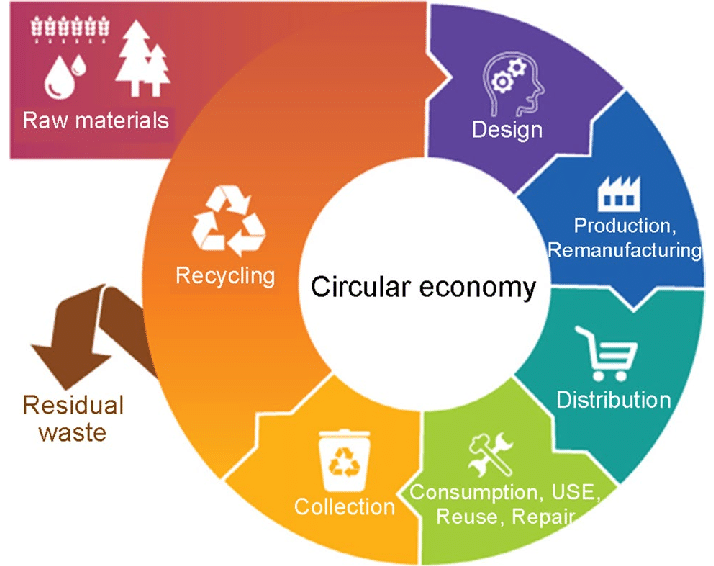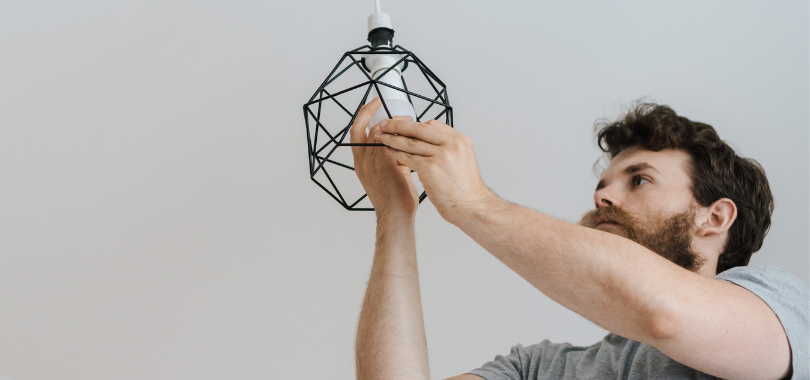The Circular Economy Model: Developing Environmental and Organizational Long-term Value

Image Source: Nancy Bourque | Pexels
A hundred billion tons of materials enter the global economy every year. Only 8.6% of the total amount of the materials are cycled back into the economy. This is the result of the linear economic model. In a case study written by Thibaut Wautelet, he refers to the linear economic model as a production and consumption model based on the “take-make-waste” scheme. He explained that raw materials are collected, then transformed into goods that are used and finally discarded in landfills or incinerated as waste. This approach turned out to be broken, enabling overconsumption to the detriment of planetary health.
Governments and businesses are looking to adopt the circular economy model and start repairing the damage created by unsustainable production and consumption. According to published research in “Cleaner Environmental Systems Journal”, authors define the circular economy as a catalyst for sustainable business. Moreover, the circular model promotes “…the use of resources within closed-loop systems, reducing pollution or avoiding resource leakage while sustaining economic growth.”
The pressure to adopt sustainability compels companies to implement the “reduce, reuse, and recycle” practices from the design stage to post-sales activities. Based on the same research, “Circular economy as a driver to sustainable businesses”, the influence of the circular economy can be seen in many business areas:
- Cost management – The circular model leads to the transformation of products at the end-of-life cycles into resources for new products. Integrating material recycling into new component production can close the loop, reducing waste and the usage of more expensive raw materials.
- Supply chain – The circular management of the supply chain is based on the coordination across the different members in closing, slowing, or narrowing energy and material flows. Additionally, the packaging system is an important aspect of the distribution process circularity.
- Process management – The business processes are rebuilt to make them more circular, facilitating the reusing and recycling out of the desire to extend product life and reduce environmental impact.
- Service management – The Product-Service system is considered an enabler of the circular economy by offering services instead of products aiming at pro-environmental outcomes.
- Research and development – The achievement of circular goals relies heavily on design, which determines the circular potential. The life-cycle-based research and development allows the selection of the type and quantity of materials and determining how they are combined – a process that affects the product’s life and the possibility of repairing and recycling it.

Figure 1. Product Lifecycle in Circular Economy Model | News European Parliament
Read more >> Incorporating Sustainability Into Every Organizational Decision-Making Process
Companies Leading the Change
Companies embrace the concept of circularity in response to the growing interest of customers in green practices and concerns about the global waste problem. Philips is one of the companies that are successfully paving the way toward the circular economy in their industry.
Philips was one of the largest electronics companies in the world. But it has changed its focus on health technology, looking to improve people’s health and well-being. Its products include large-scale and small medical equipment and home care products. The company developed new business models to adapt to the circular principles organized on seven strategic pillars:- Close the loop with current products through take-back, refurbishment, and recycling
- Further circular practices across Philips sites, including zero waste to landfill policy
- The circular design of products and business models
- Technical competence building
- Driving change with external coalitions and supply chain
- Embedding in the Philips Business System
In 2016, the company set goals to generate 15% of revenues from circular products and services and send zero waste to landfills in internal operations. At the end of 2020, Philips achieved their circular goals. Therefore, they set three greater targets for 2025: to generate 25% of revenue from circular solutions, send no waste to landfills, and close the loop by offering a trade-in on all professional medical equipment.
The Benefits of Adopting the Circular Model
The Circular Model and its principles are still new to the business ecosystem, and the market penetration of circular business models remains limited. However, the potential to scale up the model is considerable in many industries.
Besides the environmental impact that the circular model creates through the reduction of greenhouse gas emissions or the use of fewer nonrenewable resources, or achieving zero waste, shifting toward circularity can help companies secure a competitive advantage and create long-term value.
The circular model enables new revenue streams by accessing new markets or cutting off costs from waste generation. It reduces the dependency on raw material suppliers and increases resilience in the face of supply chain disruption.
Additionally, by implementing a circular model, businesses can attract new clients and improve the retention of old ones, as sustainable practices are becoming an influencing factor in customers’ buying decisions. Also, customer loyalty is favored due to servitization, product-as-a-service offerings, or take-back programs.
Read more >> Green Transformation Strategies: Building Sustainable Tourism for the Future
Based on the survey conducted by Deloitte, more consumers this year are pursuing a better sustainable lifestyle. Results show that 40% of consumers choose brands that promote sustainable values and practices, which increased by six points compared to 2021. The number of consumers who stopped purchasing from a specific brand due to their ethical or sustainable issues and concerns towards the company has also increased by six points in 2022, which is 34%.
Going in circles is the way forward. It is time for companies to rethink how they do business, considering industrialization’s impact on the environment, relevant international initiatives, such as the UN Sustainable Development Goals and the EU Circular Economy Action Plan, and the increasing importance of sustainability to everyday customers. The change may be difficult for organizations used to operating in the linear economy but not impossible as seen in the above examples. In order to thrive in the market, companies must establish circular business models and adapt their strategies to the circular economy.
To widen your expertise in establishing effective strategies and organizational planning, read more comprehensive articles here.**********
Editor’s Note: This article was first published on May 26, 2022 and last updated on September 16, 2024.


